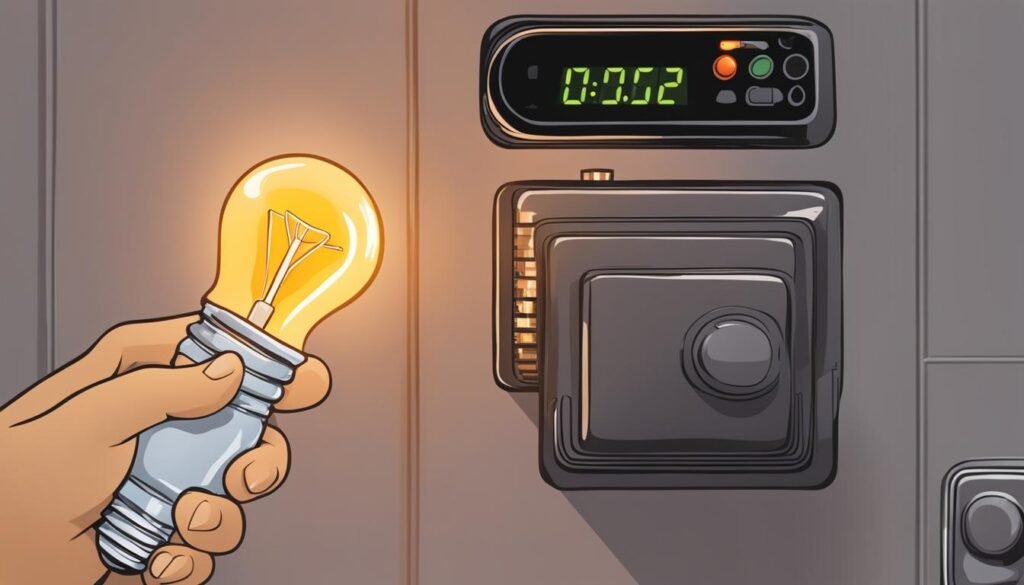TDU Delivery Charges, also known as Transmission and Distribution Utility Charges, are an important component of your monthly electric bill. These charges, which change every March and September, account for the maintenance of the poles, wires, and meters that deliver electricity to your home. TDU delivery rates are regulated by the Public Utility Commission of Texas (PUCT) and are included in your bill from your retail electricity provider. These charges cannot be avoided, but it is crucial to understand their impact on your utility bill.
- TDU Delivery Charges are part of your monthly electric bill and cover the maintenance of electricity delivery infrastructure.
- These charges change every March and September.
- TDU delivery rates are regulated by the Public Utility Commission of Texas (PUCT).
- Understanding TDU Delivery Charges is essential for managing your utility bill effectively.
- These charges cannot be avoided, but you have control over choosing your electricity supplier.
Current TDU Delivery Charges in Texas
Texas residents are subject to TDU Delivery Charges as part of their monthly electric bill. These charges, regulated by the Public Utility Commission of Texas (PUCT), cover the maintenance of the infrastructure that delivers electricity to homes and businesses. Understanding the current TDU Delivery Charges in Texas can help consumers better assess their utility bills and manage their energy usage.
The TDU Delivery Charges vary across the five deregulated Texas markets. As of the most recent update, the monthly charges are as follows:
Current TDU Delivery Charges in Texas:
- Market 1: $X.XX per month
- Market 2: $X.XX per month
- Market 3: $X.XX per month
- Market 4: $X.XX per month
- Market 5: $X.XX per month
These charges are subject to change every March and September, so it’s important to stay informed about any updates from your retail electricity provider. By keeping track of the current TDU Delivery Charges in Texas, consumers can better understand their energy expenses and make informed decisions about their electricity usage.
Factors Influencing TDU Delivery Charges
Understanding the factors that contribute to TDU Delivery Charges is crucial in managing your electricity bill. These charges are calculated based on several key factors, including the size of your electrical load, demand charges, and kWh usage. It’s important to note that TDU Delivery Charges are regulated and approved by the Public Utility Commission of Texas (PUCT).
When reviewing your bill, you may come across various components that make up the TDU Delivery Charges. These can include the Energy Efficiency Cost Recovery Factor (EECRF), which supports energy efficiency programs, the Transmission Cost Recovery Factor (Rider TCRF), which covers the costs of maintaining transmission systems, the Accumulated Deferred Federal Income Tax (ADFIT) Credit, and Transition Charges (Schedule TC2, TC3, SRC, and TC5).
By understanding the breakdown of these charges, you can gain insights into how your TDU Delivery Charges are calculated. It’s important to note that these charges cannot be avoided, as they are necessary for the maintenance and operation of the infrastructure that delivers electricity to your home or business.
Key Takeaways
– TDU Delivery Charges are calculated based on factors such as electrical load, demand charges, and kWh usage.
– Components of TDU Delivery Charges may include the EECRF, Rider TCRF, ADFIT Credit, and Transition Charges.
– It is important to review the itemized breakdown of these charges on your bill to understand their impact on your overall utility bill.

Commercial TDU Delivery Charges
For commercial customers, understanding the TDU Delivery Charges is essential for managing their electricity expenses. The charges for commercial customers vary depending on factors such as the type of meter, demand charges, and demand levels. To find out the specific tariff for their business, commercial customers can contact their delivery company or consult their electricity supplier.
While it may be challenging to change the commercial delivery tariff, businesses still have options for controlling their electricity bill. One effective strategy is to lock in a competitive commercial electricity rate with their supplier. By comparing rates and choosing the right supplier, commercial customers can ensure they have the most cost-effective electricity plan.
Another way for businesses to manage their TDU Delivery Charges is by effectively managing their peak demand. By implementing energy-saving practices and reducing electricity usage during peak demand periods, commercial customers can lower their demand charges and subsequently decrease their overall TDU Delivery Charges.
Tips to Lower TDU Delivery Charges
Looking for ways to reduce your TDU Delivery Charges? Here are some helpful tips to lower your monthly electricity bill:
1. Be energy conscious with your appliances and electronics. Turn off lights and unplug devices when not in use. Use energy-efficient appliances and consider installing programmable thermostats to optimize energy usage.
2. Implement energy-saving practices around your home or office. Use natural lighting whenever possible, and seal any gaps or cracks in windows and doors to improve insulation. This will reduce the need for heating and cooling, lowering your energy consumption.
3. Invest in energy-efficient equipment. Upgrade to LED lightbulbs, which use significantly less energy than traditional incandescent bulbs. Consider purchasing energy-efficient appliances with the ENERGY STAR label, which can save you money in the long run.
4. Use power strips or surge protectors to easily turn off multiple devices at once. This prevents standby power consumption, also known as vampire power, which occurs when devices continue to draw power even when not in use.
By adopting these energy-saving practices, you can not only reduce your environmental impact but also lower your TDU Delivery Charges. Start implementing these tips today and see the difference it makes in your monthly utility bill!
FAQ
What are TDU Delivery Charges?
TDU Delivery Charges, also known as Transmission and Distribution Utility Charges, are fees on your electric bill that cover the maintenance of the infrastructure that delivers electricity to your home or business.
How often do TDU Delivery Charges change?
TDU Delivery Charges change twice a year, on March 1 and September 1, and these changes need to be approved by the Public Utility Commission of Texas (PUCT).
What factors influence TDU Delivery Charges?
TDU Delivery Charges are calculated based on factors such as the size of your electrical load, demand charges, and kWh usage. They may also include components like Energy Efficiency Cost Recovery Factor (EECRF), Transmission Cost Recovery Factor (Rider TCRF), Accumulated Deferred Federal Income Tax (ADFIT) Credit, and Transition Charges (Schedule TC2, TC3, SRC, and TC5).
How can I find out the current TDU Delivery Charges in Texas?
The current TDU Delivery Charges for the five deregulated Texas markets can be found on your bill from your retail electricity provider or on the respective utility company’s website.
Can I choose my electricity supplier?
Yes, you have the power to choose your electricity supplier. By shopping online and comparing business electricity rates, you can lock in a competitive rate for your power.
Do commercial customers have different TDU Delivery Charges?
Yes, TDU Delivery Charges for commercial customers vary based on the type of meter, demand charges, and demand levels. Commercial customers can contact their delivery company or consult their electricity supplier for information on their specific tariff.
Are there any tips to lower TDU Delivery Charges?
Yes, there are several strategies to lower TDU Delivery Charges. Some tips include washing clothes in cold or warm water, setting the water heater to 120°F, regularly changing air filters, and grilling outdoors to minimize stove and oven usage.

